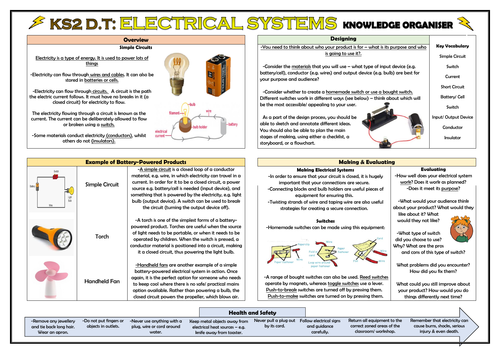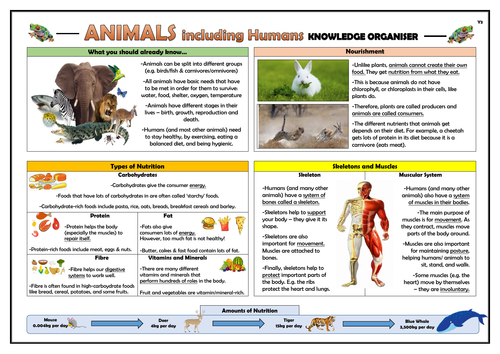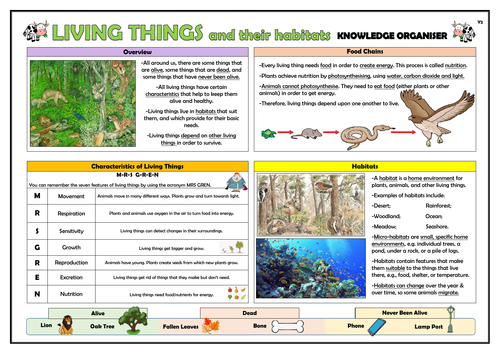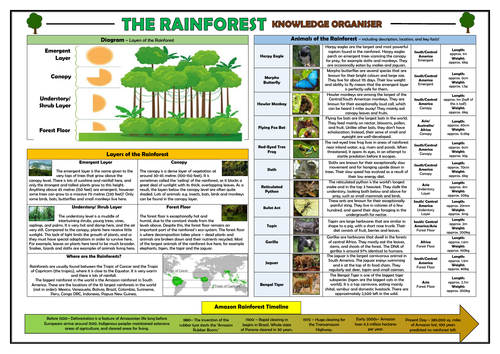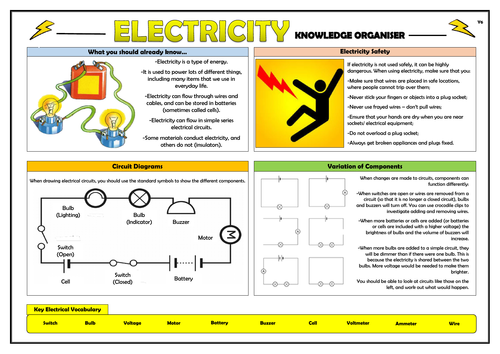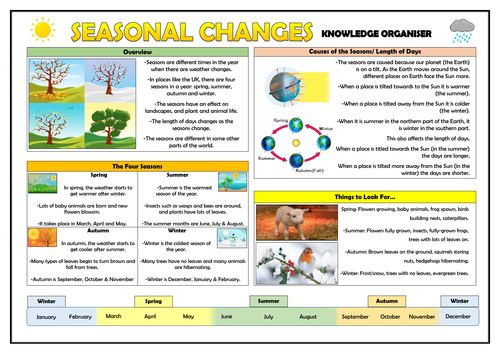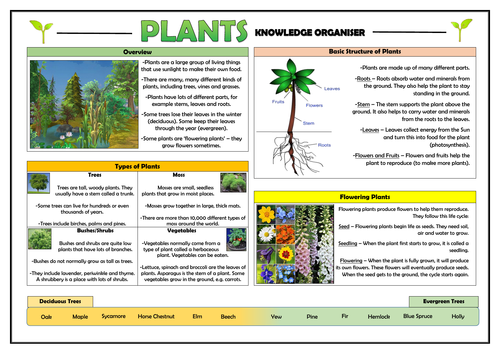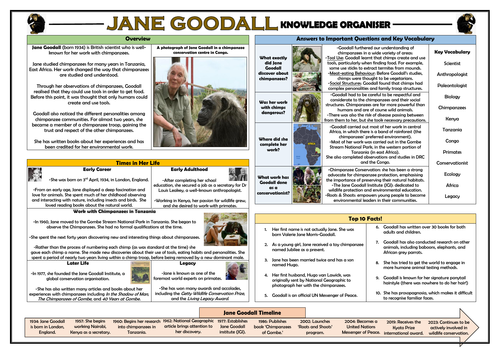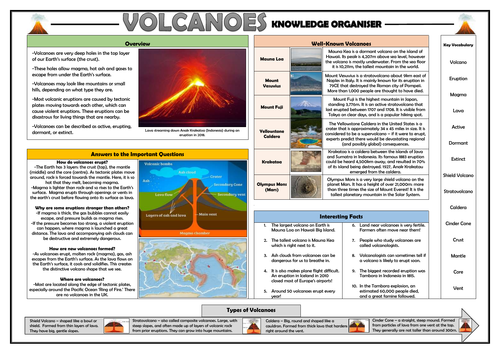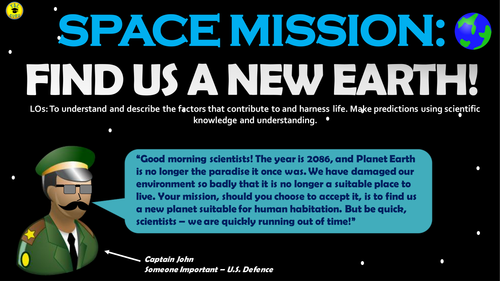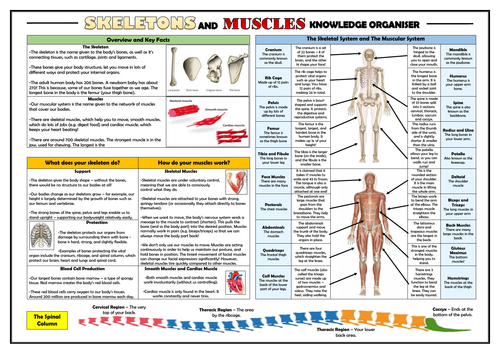
3k+Uploads
1921k+Views
2248k+Downloads
Primary science

DT: Electrical Systems - Simple Circuits and Switches - Knowledge Organiser!
This clear, detailed and visually-appealing resource offers a complete reference point for children, teachers and parents building their knowledge of electrical systems as a part of the KS2 curriculum in Design and Technology. The organiser is clear, logical and fully meets the expectations of the National Curriculum.
This organiser has a particular emphasis on simple circuits and switches.
It includes sections on:
-Overview - Electrical Systems, Simple Circuits and Switches;
-Example Battery-Powered Products - Simple Circuit, Torch, Handheld Fan;
-Designing;
-Making and Evaluating;
-Health and Safety Guidance.
The resource is designed to be printed onto A3, and is provided as both a PDF and a Word version (so that you can edit if you want to). All images used are licensed for commercial use and are cited on a separate document (included).

Year 3 Animals including Humans Knowledge Organiser!
This clear, detailed and visually-appealing resource offers a complete reference point for Year 3 children, teachers and parents covering knowledge relating to ‘Animals including Humans’, as a part of their science learning. It contains comprehensive sections on:
Overview and ‘what you should already know’ (from their prior learning);
Types of Nutrition;
Amounts of Nutrition;
Animal Nourishment;
Skeletons and Muscular System;
Key Vocabulary (underlined).
The content is fully aligned with the NC expectations for Year 3 children relating to ‘Animals including Humans:’
-identify that animals, including humans, need the right types and amount of nutrition,
and that they cannot make their own food; they get nutrition from what they eat
-identify that humans and some other animals have skeletons and muscles for
support, protection and movement.
The resource is designed to be printed onto A3, and is provided as both a PDF and a Word version (so that you can edit if you want to). All images used are licensed for commercial use and are cited on a separate document (included).

Year 2 Living Things and their Habitats Knowledge Organiser!
This clear, detailed and visually-appealing resource offers a complete reference point for Year 2 children, teachers and parents covering knowledge relating to ‘Living Things and their Habitats’, as a part of their science learning. It contains comprehensive sections on:
Overview;
Characteristics of Living Things;
Alive, Dead, and Never Been Alive;
Food Chains;
Habitats;
Key Vocabulary (underlined).
The content is fully aligned with the NC expectations for Year 2 children relating to ‘Living Things and their Habitats:’
-explore and compare the differences between things that are living, dead, and things that have never been alive;
-identify that most living things live in habitats to which they are suited and describe;
how different habitats provide for the basic needs of different kinds of animals and
plants, and how they depend on each other;
-identify and name a variety of plants and animals in their habitats, including microhabitats;
-describe how animals obtain their food from plants and other animals, using the idea of a simple food chain, and identify and name different sources of food.
The resource is designed to be printed onto A3, and is provided as both a PDF and a Word version (so that you can edit if you want to). All images used are licensed for commercial use and are cited on a separate document (included).

Year 2 Animals Including Humans Knowledge Organiser!
This clear, detailed and visually-appealing resource offers a complete reference point for Year 2 children, teachers and parents covering knowledge relating to ‘Animals including Humans’, as a part of their science learning. It contains comprehensive sections on:
Overview and ‘what you should already know’ (from their prior learning);
Basic Needs of Animals;
Life Stages of Animals;
Reproduction and Growth;
Staying Healthy;
Key Vocabulary (underlined).
The content is fully aligned with the NC expectations for Year 2 children relating to ‘Animals including Humans:’
-notice that animals, including humans, have offspring which grow into adults
-find out about and describe the basic needs of animals, including humans, for
survival (water, food and air)
-describe the importance for humans of exercise, eating the right amounts of different
types of food, and hygiene.
The resource is designed to be printed onto A3, and is provided as both a PDF and a Word version (so that you can edit if you want to). All images used are licensed for commercial use and are cited on a separate document (included).

Year 2 Use of Everyday Materials Knowledge Organiser!
This clear, detailed and visually-appealing resource offers a complete reference point for Year 2 children, teachers and parents covering knowledge relating to ‘Use of Everyday Materials’, as a part of their science learning. It contains comprehensive sections on:
Overview;
Types of Materials;
Properties of Materials;
Development of Materials;
Key Vocabulary
The content is fully aligned with the NC expectations for Year 2 children relating to ‘Use of Everyday Materials:’
identify and compare the suitability of a variety of everyday materials, including
wood, metal, plastic, glass, brick, rock, paper and cardboard for particular uses
find out how the shapes of solid objects made from some materials can be changed by squashing, bending, twisting and stretching.
The resource is designed to be printed onto A3, and is provided as both a PDF and a Word version (so that you can edit if you want to). All images used are licensed for commercial use and are cited on a separate document (included).

Rainforests KS2 Knowledge Organiser!
This clear, detailed and visually-appealing resource offers a complete reference point for students learning or revising knowledge relating to rainforests. It contains comprehensive sections on:
The different layers of the rainforest (emergent, canopy, understory/shrub, forest floor) and diagram;
Information about where rainforests can be found in the world;
Animals of the rainforest (including distribution, images, habitat, size/weight, and key facts);
Timeline of deforestation;
The resource is designed to be printed onto A3, and is provided as both a PDF and a Word version (so that you can edit if you want to). All images used are licensed for commercial use and are cited on a separate document (included). The resource is most suitable for students in KS2 or KS3.

Year 6 Electricity Knowledge Organiser!
This clear, detailed and visually-appealing resource offers a complete reference point for Year 6 children, teachers and parents covering knowledge relating to ‘Electricity’, as a part of their science learning. It contains comprehensive sections on:
What you should already know (from prior learning);
Circuit Diagrams;
Electrical Safety;
Variation Components;
Key Vocabulary.
The content is fully aligned with the NC expectations for Year 6 children relating to ‘Electricity:’
-Associate the brightness of a lamp or the volume of a buzzer with the number and
voltage of cells used in the circuit
-Compare and give reasons for variations in how components function, including the
brightness of bulbs, the loudness of buzzers and the on/off position of switches
-Use recognised symbols when representing a simple circuit in a diagram.
The resource is designed to be printed onto A3, and is provided as both a PDF and a Word version (so that you can edit if you want to). All images used are licensed for commercial use and are cited on a separate document (included).

Year 1 Seasonal Changes Knowledge Organiser!
This clear, detailed and visually-appealing resource offers a complete reference point for Year 1 children, teachers and parents covering knowledge relating to ‘Seasonal Changes’, as a part of their science learning. It contains comprehensive sections on:
Overview;
The Four Seasons;
Seasons Over the Calendar Year;
Cause of the Seasons/ Length of Days;
Things to Look For;
Key Vocabulary.
The content is fully aligned with the NC expectations for Year 1 children relating to ‘Seasonal Changes:’
-observe changes across the four seasons
-observe and describe weather associated with the seasons and how day length
varies
The resource is designed to be printed onto A3, and is provided as both a PDF and a Word version (so that you can edit if you want to). All images used are licensed for commercial use and are cited on a separate document (included).

Year 2 Plants Knowledge Organiser!
This clear, detailed and visually-appealing resource offers a complete reference point for Year 2 children, teachers and parents covering knowledge relating to ‘Plants’, as a part of their science learning. It contains comprehensive sections on:
What you should already know (from earlier learning);
What Plants Need to Grow;
Growth from Seeds/Bulbs into Mature Plants;
Plant Life Cycle;
Shorter and Taller Plants Continuum;
Key Vocabulary.
The content is fully aligned with the NC expectations for Year 2 children relating to ‘Plants’:
-observe and describe how seeds and bulbs grow into mature plants;
-find out and describe how plants need water, light and a suitable temperature to grow and stay healthy.
The resource is designed to be printed onto A3, and is provided as both a PDF and a Word version (so that you can edit if you want to). All images used are licensed for commercial use and are cited on a separate document (included).

KS2 Solar System Knowledge Organiser!
This clear, detailed and visually-appealing resource offers a complete reference point for KS2 students learning or revising knowledge relating to the The Solar System. It contains comprehensive sections on:
- The Sun, Planets, and Dwarf Planets;
- Information about their moons;
- Other Bodies in the Solar System;
- Human Spaceflight;
- Timeline of Discovery;
The resource is designed to be printed onto A3, and is provided as both a PDF and a Word version (so that you can edit if you want to). All images used are licensed for commercial use and are cited on a separate document (included).

Year 1 Plants Knowledge Organiser!
This clear, detailed and visually-appealing resource offers a complete reference point for Year 1 children, teachers and parents covering knowledge relating to ‘Plants’, as a part of their science learning. It contains comprehensive sections on:
Overview;
Types of Plants;
Deciduous and Evergreen Trees;
Basic Parts of a Plant;
Flowering Plants;
Key Vocabulary.
The content is fully aligned with the NC expectations for Year 1 children relating to ‘Plants:’
-identify and name a variety of common wild and garden plants, including deciduous
and evergreen trees
-identify and describe the basic structure of a variety of common flowering plants,
including trees.
The resource is designed to be printed onto A3, and is provided as both a PDF and a Word version (so that you can edit if you want to). All images used are licensed for commercial use and are cited on a separate document (included).

Crazy Animal Limericks Anthology! (Original Poems and Comprehension Tasks!)
This limerick anthology and comprehension pack contains over 20 pages of original, child-friendly, and humorous limerick poems, alongside differentiated comprehension resources for beginner, intermediate, and expert limerick learners.
I made these resources when I was writing a limerick scheme of learning a while back - I was disappointed with the lack of age-appropriate limericks available (that were suitable for KS1 and KS2 children, and still met the structural requirements of the poetic form). Therefore I began designing this anthology - from fashion-loving crocodiles, to sun-bathing penguins, to crime-fighting fish, to geese with anger management issues, all of the limericks here have gone down really well with all of the children that I have taught.
The comprehension tasks enable students to meet a number of the key expectations for Reading within the new National Curriculum. They focus upon comprehension of key elements such as interpretation of subject matter, analysis of language, and comments upon structural organisation.
The anthology contains a number of images, all of which are licensed for commercial use. Citations of these can be found on the final page of the anthology.
Many Thanks!

Year 2 Living Things and their Habitats: Knowledge Retrieval Activities Pack!
This resource offers a wide range of knowledge retrieval activities for those studying Living Things and their Habitats in Year 2.
It covers information including classification of animals, features of living things, classification of plants, key vocabulary and habitat changes.
There are a wide range of interesting and thought-provoking activities (over 30 slides in total) which help children to secure all of the important information from the unit. Research-approved activities include:
-Quick Fire Questions;
-Picture Stimulus;
-Retrieval Grid;
-Fill in the Blank;
-Vocabulary Busters;
-Fact Dump;
-Order 6;
-Detective/ Questioning Tasks;
-Anagrams;
These resources have been tried and tested in the classroom and have proven successful in helping children to consolidate key information within this unit.

Year 4 Living Things and their Habitats - Knowledge Retrieval Activities Pack!
This resource offers a wide range of knowledge retrieval activities for those studying Living Things and their Habitats in Year 4.
It covers information including classification of animals, features of living things, classification of plants, key vocabulary and habitat changes.
There are a wide range of interesting and thought-provoking activities (over 30 slides in total) which help children to secure all of the important information from the unit. Research-approved activities include:
-Quick Fire Questions;
-Picture Stimulus;
-Retrieval Grid;
-Fill in the Blank;
-Vocabulary Busters;
-Fact Dump;
-Rank 5;
-Detective/ Questioning Tasks;
-Anagrams;
These resources are tried and tested in the classroom and have proven successful in helping children to consolidate key information within this unit.

Year 5-6 Living Things and their Habitats: Knowledge Retrieval Activities Pack!
This resource offers a wide range of knowledge retrieval activities for those studying Living Things and their Habitats in Years 5-6.
It covers information including classification of animals (including the Linnaeus Classification system) , features of living things, naturalists and animal behaviourists, plant life cycles, key, animal life cycles and key vocabulary.
There are a wide range of interesting and thought-provoking activities (over 30 slides in total) which help children to secure all of the important information from the unit. Research-approved activities include:
-Quick Fire Questions;
-Picture Stimulus;
-Retrieval Grid;
-Fill in the Blank;
-Vocabulary Busters;
-Fact Dump;
-Rank 5;
-Detective/ Questioning Tasks;
-Anagrams;
These resources have been tried and tested in the classroom and have proven successful in helping children to consolidate key information within this unit.

Jane Goodall Knowledge Organiser!
This clear, detailed and visually-appealing resource offers a complete reference point for children learning about Jane Goodall as a part of either their history or their science study. It contains comprehensive sections entitled:
Overview;
Times in Her Life;
Important Vocabulary;
Jane Goodall Timeline;
Answers to the Important Questions;
Top Ten Facts.
The resource is designed to be printed onto A3, and is provided as both a PDF and a Word version (so that you can edit if you want to). All images used are licensed for commercial use.

Volcanoes Knowledge Organiser!
This clear, detailed and visually-appealing resource offers a complete reference point for students learning or revising knowledge relating to volcanoes. It contains comprehensive sections on:
-Overview of Volcanoes;
-Answers to the Key Questions;
-Types of Volcanoes;
-Well-Known Volcanoes;
-Key Vocabulary;
-Key Facts.
The resource is designed to be printed onto either A4 or A3, and is provided as both a PDF and a Word version (so that you can edit if you want to). All images used are licensed for commercial use. The resource is most suitable for students in KS2 or KS3.

Rosalind Franklin Knowledge Organiser!
This clear, detailed and visually-appealing resource offers a complete reference point for children learning about Rosalind Franklin, particularly those completing a history study of ‘Significant Individuals’, or children studying notable scientists as a part of their science curriculum. It contains comprehensive sections entitled:
Overview;
Times in Her Life;
Important Vocabulary;
Rosalind Franklin Timeline;
Answers to the Important Questions;
Top Ten Facts.
The resource is designed to be printed onto A3 or A4, and is provided as both a PDF and a Word version (so that you can edit if you want to). All images used are licensed for commercial use.

Space Mission: Find us a New Earth!
The year is 2086, and the students are needed for a special mission!
This space mission has been designed to provide students with a fun and interesting group challenge, whilst also building key skills in critical thinking and collaboration, and essential knowledge for Science, English, and Mathematics.
Students are placed in a scenario in which Earth is no longer habitable, and humans must seek to move to another planet in the Universe. Compiled for them is information on each of the potentially most habitable planets that are known to man (these are the real planets that have been confirmed by NASA and other agencies as having the most potential for life). In reading the key information, students will be drawing upon their knowledge of Science terminology, and will need to make some Maths calculations to work out implications of living on different planets.
What will become clear fairly quickly is that none of the potential planets are perfect, and they must use reasoned judgements to determine which of them have cons that could perhaps be overcome. They then present their ideas, using clear and articulate speaking and listening skills, and write up their report, using appropriate written communication (a scaffold is provided to frame this).
Everything is provided for you to download, print, and teach:
- A comprehensive, whole-activity PowerPoint that guides the students through the mission;
- Detailed and colourful information sheets on each of the contender planets for being the next Earth (these include links to amazing websites that can provide the children with more information);
- A 'Pros and Cons' scaffold, to help students record their findings;
- An information sheet on the 'habitable zone' around stars;
- A scaffold for writing up findings;
- Sorting cards for help with determining the key features of habitable planets;
- Full teacher guidance.
Considering the time and effort that it took to create these resources, I think that they offer exceptional value. Whenever I have used this activity before, it has taken at least 2-3 lessons, including the introduction, starter challenge, main mission, presentations, and write-up. I originally have used this with mid-ability Year 6,7, and 8 groups, but colleagues have easily adapted it for students across key stages 2-4.
All images have been cited at the end of the PowerPoint presentation and are licensed for commercial use.

KS2 Skeletons and Muscles Knowledge Organiser!
This clear, detailed and visually-appealing resource offers a complete reference point for KS2 students learning or revising knowledge relating to skeletons and muscles. It contains comprehensive sections on:
The skeletal and muscular systems - complete with annotated diagrams and explanations of key bones/ muscles;
Overview of bones and muscles, including key facts;
Functions of the skeleton - support, protection, and the production of red blood cells;
How muscles work - voluntary and involuntary muscles;
Annotated diagram of the regions of the spinal column.
The resource is designed to be printed onto A3, and is provided as both a PDF and a Word version (so that you can edit if you want to). All images used are licensed for commercial use and are cited on a separate document (included).

